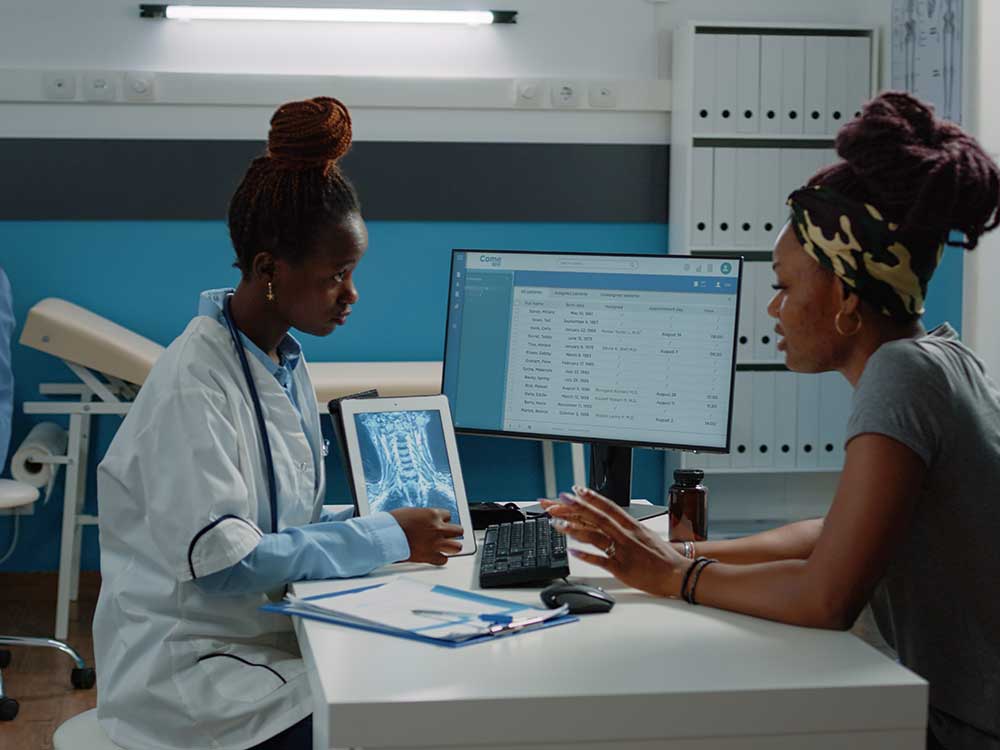Exactly How to Boost Efficiency in Medical Administration with Modern Devices
Exactly How to Boost Efficiency in Medical Administration with Modern Devices
Blog Article
Best Practices in Medical Management for Improving Performance and Minimizing Costs
In the ever-evolving landscape of health care, the pursuit of best methods in clinical administration is extremely important for improving efficiency and suppressing expenses. By integrating innovative technologies such as digital health records and telemedicine, medical care service providers can enhance procedures and improve client care.
Leveraging Advanced Innovation
In today's swiftly evolving healthcare landscape, leveraging sophisticated innovation is no more optional yet essential for reliable clinical management. The integration of digital solutions into medical care systems has changed the means centers operate, simplifying processes and boosting person treatment. Electronic Health And Wellness Records (EHRs) are pivotal, offering thorough client data that can be accessed promptly by authorized workers, therefore decreasing redundancy and minimizing mistakes. By systematizing individual information, EHRs eliminate the demand for difficult documents and promote seamless communication amongst healthcare providers.
Telemedicine is another technical advancement that has actually revolutionized person communication. It provides ease for both patients and healthcare professionals by enabling remote consultations, which can decrease the requirement for in-person check outs and maximize consultation scheduling. In addition, telehealth platforms can prolong healthcare access to country or underserved locations, connecting gaps in care distribution.
Moreover, making use of Expert system (AI) and device discovering is coming to be increasingly widespread in predictive analytics, enabling very early detection of possible health issues and more educated decision-making. These technologies, when integrated efficiently, can boost analysis precision and customize person treatment strategies, ultimately causing boosted health care end results and functional effectiveness.
Optimizing Source Allotment
By strategically handling sources such as employees, devices, and financial resources, medical care facilities can significantly improve their functional efficiency, enhance person results, and decrease unneeded expenditures. The first step in optimizing source appropriation entails performing a thorough assessment of existing possessions and determining areas where resources may be underutilized or overextended.
Prioritizing source allowance based on person demands and solution needs is crucial. This involves straightening sources with high-demand areas, such as emergency treatment or specialized therapies, to guarantee prompt and reliable client care. Executing flexible staffing models can additionally maximize labor sources by changing personnel appropriation in feedback to changing person volumes. Additionally, welcoming telemedicine and other technical services can minimize physical source constraints by providing different opportunities for patient-provider interactions.
Economic resources ought to be diligently checked and allocated with critical foresight to sustain both temporary operational demands and long-lasting institutional objectives. This includes investing in training programs that boost team expertises and adopting energy-efficient techniques that decrease functional expenses (medical administration). Inevitably, a maximized resource allotment strategy fosters a lasting health care setting that is receptive, reliable, and financially prudent
Streamlining Operations Procedures
When health care centers purpose to enhance operational efficiency, improving process processes ends up being a pivotal focus. Efficient process minimize redundancy, eliminate unnecessary steps, and enhance control among health care specialists. This approach not only speeds up solution shipment however likewise enhances the high quality of patient treatment.

Next, modern technology integration plays a substantial function in enhancing operations. Executing electronic health records (EHRs) and digital physician order access (CPOE) systems reduces documentation, lessens human error, and makes certain details comes to all pertinent workers. In addition, leveraging telemedicine platforms can improve individual consultations and follow-ups, minimizing the strain on physical infrastructure.

Inevitably, structured workflows result in cost reductions and enhanced individual contentment, cultivating a more sustainable healthcare setting.
Enhancing Information Monitoring
Building upon structured operations, optimizing information monitoring becomes a crucial element ahead of time medical care administration. Reliable information administration systems are crucial for preserving precise patient records, boosting decision-making, and ensuring compliance with regulative standards. By carrying out durable data administration options, medical care centers can boost the quality of client treatment while simultaneously reducing functional costs.
One secret element of enhancing information management is the integration of advanced electronic wellness document (EHR) systems. These systems help with the seamless exchange of individual information throughout different departments, reducing replication of examinations and decreasing errors. A properly designed EHR system supports information analytics, enabling doctor to determine patterns and make informed choices concerning person care.
Additionally, securing patient data is vital. Adopting extensive cybersecurity procedures, consisting of security and regular audits, guarantees the honesty and discretion of delicate info. This not just secures patients yet additionally maintains the establishment's reputation.
Investing in team training is an additional critical variable. Enlightening health care experts on information administration techniques enhances their ability to efficiently utilize technology, causing enhanced patient results. Finally, boosting information management via sophisticated modern technology and thorough training is crucial for attaining performance and cost decrease in medical management.
Fostering Collaborative Communication
A critical component in advancing clinical management is cultivating collective communication amongst healthcare specialists. Effective communication is paramount for guaranteeing seamless client care, maximizing treatment results, and decreasing mistakes. By urging open discussion and sychronisation across multidisciplinary groups, medical care organizations can enhance their functional efficiency and reduce unneeded expenses.
Central to this method is the integration of communication modern technologies such as electronic wellness documents (EHRs) and safe and secure messaging platforms, which help with the quick exchange of important person information. These tools make my site it possible for health care carriers to access and share data in real time, ensuring that all team participants are educated and straightened in their decision-making processes. Regular team conferences and interdisciplinary rounds can additionally advertise a society of partnership and responsibility.
Training programs concentrated on enhancing communication skills visit the site are also crucial. These programs can assist personnel develop the capability to share information clearly and pay attention actively, therefore reducing misconceptions and fostering an encouraging job atmosphere. On top of that, taking on standard interaction protocols, such as SBAR (Scenario, Background, Assessment, Referral), can streamline the exchange of details, making sure that important information are communicated succinctly and efficiently. Inevitably, cultivating joint communication results in boosted health care delivery and expense savings (medical administration).

Conclusion
Including innovative technology, such as digital health and wellness documents and telemedicine, together with maximized resource appropriation and streamlined workflow processes, is important for boosting efficiency in clinical management. Effective information administration and cultivating collective communication among healthcare groups are critical for decreasing redundancies and enhancing care quality. hop over to these guys By focusing on preventive treatment and taking part in top quality improvement initiatives, medical care organizations can attain significant expense savings and boosted client results, thereby making sure lasting health care distribution in a progressively complex atmosphere.
Report this page